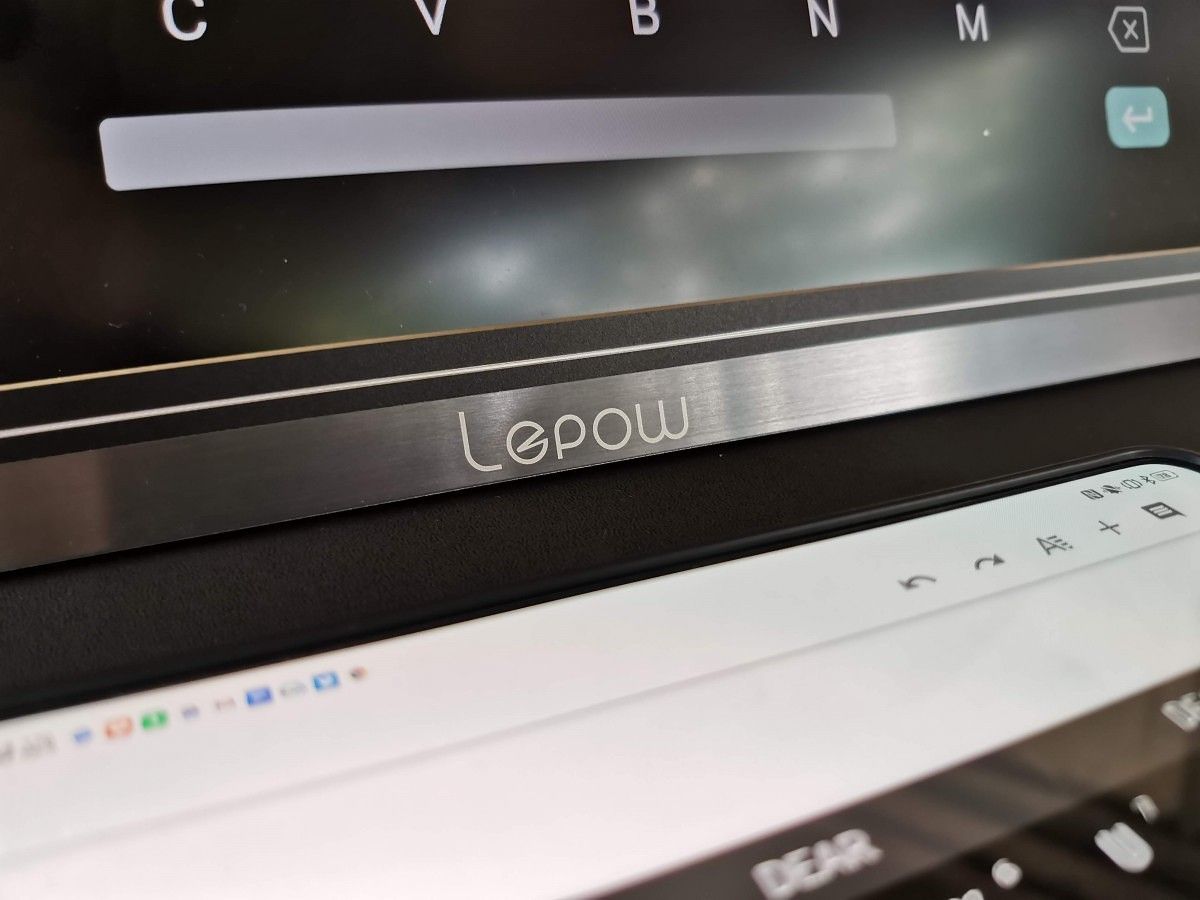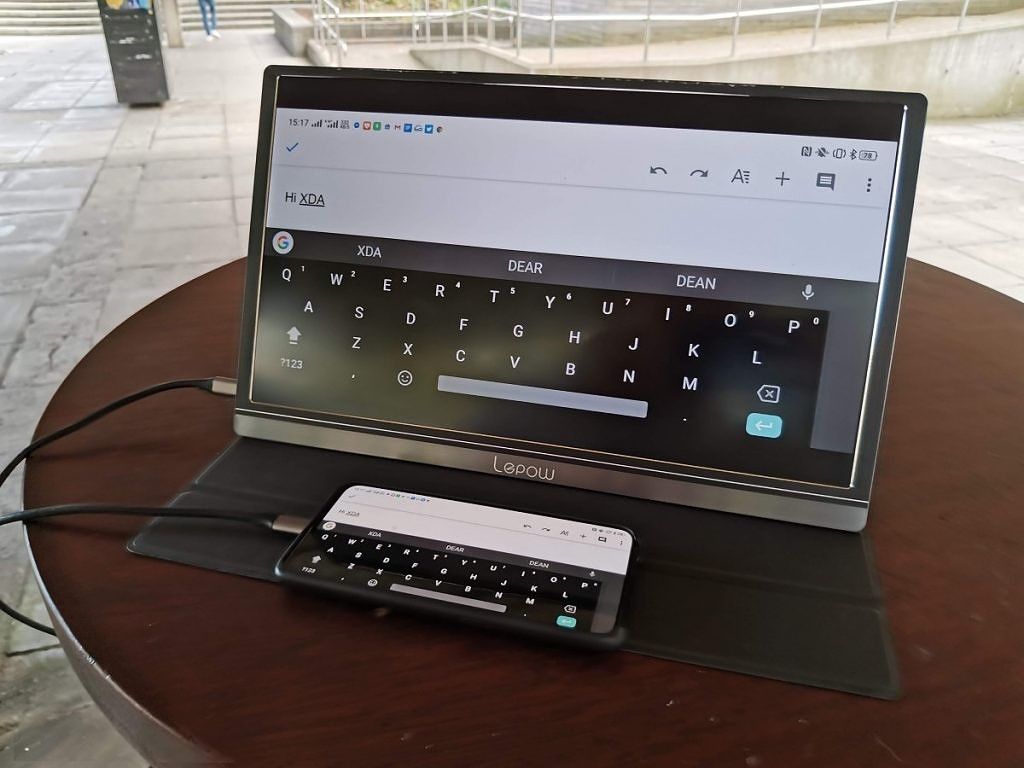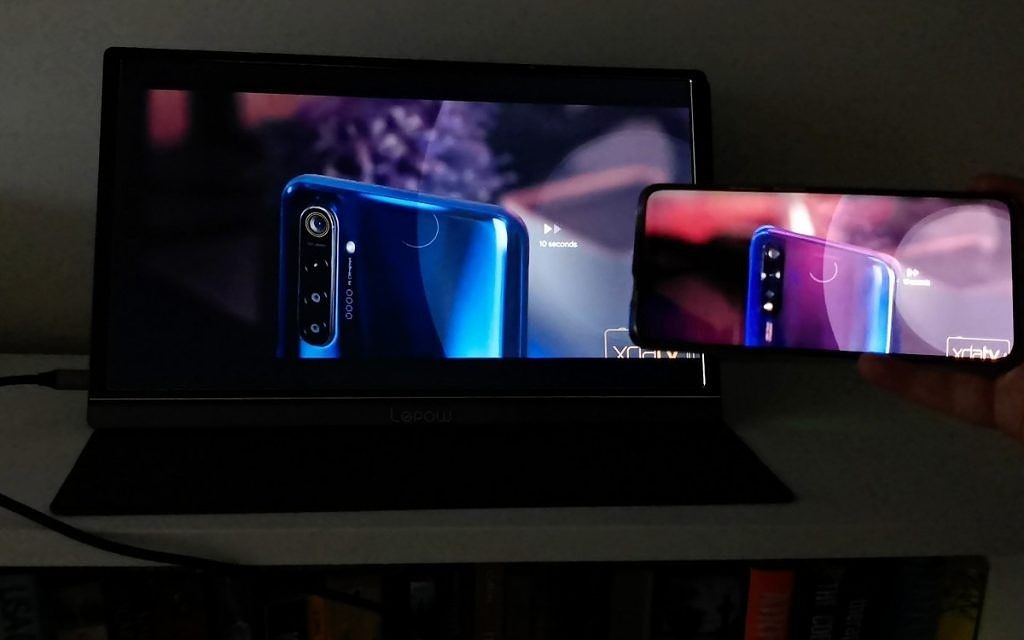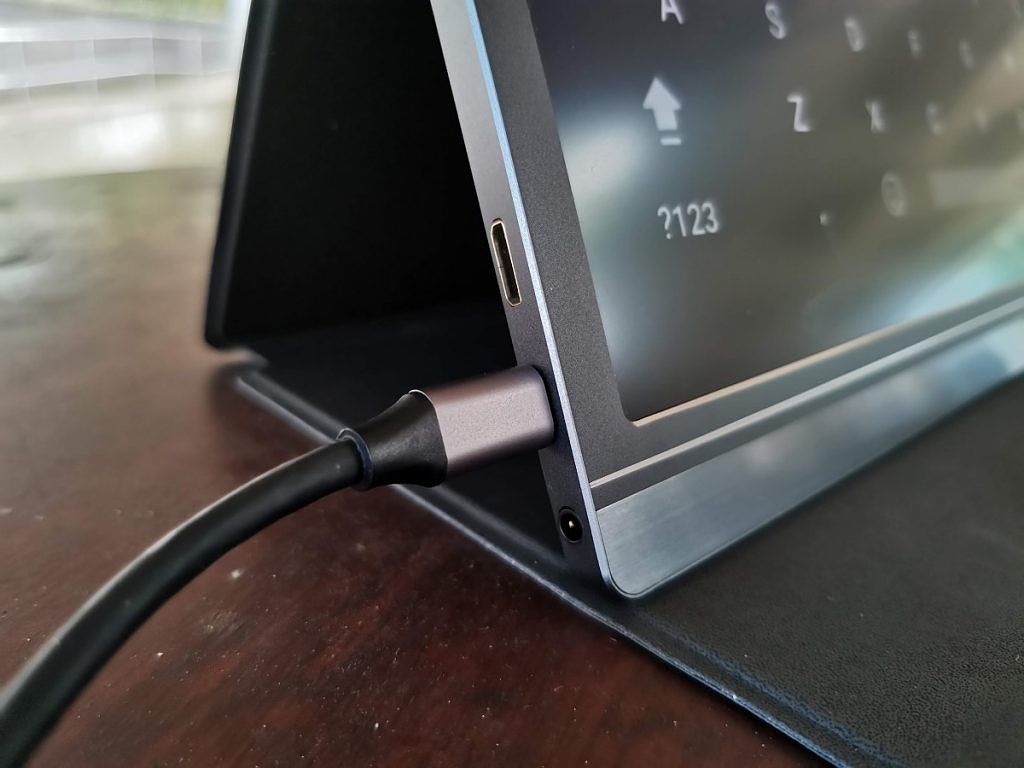Smartphone screens are getting quite big, but to some, they're not big enough. As smartphones begin to replace laptops, there needs to be a way to use your phone in a laptop-style form factor. That's where a portable monitor comes in, with the idea being that you can then use your phone on a much bigger screen. Lepow's 15.6-inch portable monitor looks pretty much like a laptop, and if you have a Samsung, Huawei, or Honor phone, you can turn it into one. It has a built-in set of speakers on each side, a mini HDMI port, two USB-C inputs (one for power only), and even a headphone jack.
https://www.youtube.com/watch?v=18ce_EWrs24
What the Lepow Portable Monitor is and isn't
First and foremost, the Lepow Portable Monitor is simply just that - a portable monitor. You don't get any fancy bells and whistles like touch capability, nor does it have a built-in battery to charge your phone or whatever. It will simply act as another display for whatever you connect to it - be it an HDMI cable or a USB-C connector. In the box, you get the following.
- USB-C to USB-C cable
- mini-HDMI to HDMI
- USB-C to USB-A cable
The USB-C to USB-C cable is likely the one you'll be using the most, as it's the easiest way to connect your phone to this monitor. If your phone doesn't support HDMI output, though, it won't here either. If it does support HDMI output, then it's simply just plug and play. The USB-C to USB-A cable is designed to plug into the monitor itself so that you can then charge your phone while it's connected. Otherwise, it's a pretty massive battery drainer. As for the mini-HDMI to HDMI cable, that's just for use in a PC or in something that has an HDMI out. You can technically use it to connect a Nintendo Switch if you have a dock, for example. I've also been using the USB-C to USB-C cable in my MacBook to connect to the monitor, which works as well. It also has a magnetic flip cover pre-attached, which can be used to stand it up in multiple positions as well.
Why use a portable monitor?
There are a lot of reasons that you may want to use a portable monitor, though its practicality may not be immediately apparent. At first, I was admittedly skeptical, though I found myself using it more and more when out and about. For example, if I want to sit down and watch Netflix or YouTube on a bigger screen, it can almost be easier to just use my phone instead. Earlier today, I was on my laptop and wanted to watch a Counter-Strike tournament while doing some work. I plugged in the Lepow monitor, put it on the table beside me, dragged the Twitch window over and then worked on my main display. It's incredibly portable, and thanks to the relatively small form factor of 15.6-inches, it can fit in a laptop bag with ease. It's about as thick as your standard laptop as well, so it's not going to take up a lot of room.
But portability kind of is the point, so what else does the Lepow portable monitor do well? You can use it for mobile games and emulators on a large screen for example, or simply just as a second display for your laptop. You don't need a USB-C output on your laptop to utilize it, so long as you have an HDMI port. On top of that, it's possible to then use Samsung DeX when out and about on your Samsung Galaxy smartphone. I personally tested it with the Samsung Galaxy Note 8 and the Samsung Galaxy S9+, and both worked great. If you set up Linux on Dex, you genuinely could have a full-fledged laptop with you at all times with just this and your smartphone.
The same goes for Huawei and Honor's "Easy Projection" modes. Easy Projection is very like Samsung Dex, only that it can also run over a network. We tested the Honor 20 Pro's Easy Projection mode a little while back, and it's a pretty neat way to use your phone as a desktop. Sadly, the Honor 20 Pro can't output over HDMI, though other Huawei and Honor phones can. If they can, they'll automatically enter their desktop mode with the Lepow Portable Monitor as well.
Pitfalls of the Lepow Portable Monitor
Like every good product, there are going to be some pitfalls. Sadly, with the Lepow Portable Monitor, I noticed two glaring issues. One that's pretty much impossible to fix (and Lepow has done a pretty good job to try to amend) and the other is just painful. I'll start with the former.
When you're using this monitor as a portable, not-plugged-in device, be prepared to drain the battery of whatever it's connected to. My OPPO Reno 10x Zoom was dropping a percent a minute, much faster than it typically does. This is mitigated by plugging the monitor into a wall charger (or anything that can output 2A/5V power) which will then actually charge whatever it's plugged into instead. By virtue of its portability, this isn't really a problem Lepow can fix. You can lower the brightness, but that's about it. On a brightness note, running only off of your smartphone's power may mean that it can struggle to reach higher brightnesses. This is entirely reliant on your phone. The OnePlus 7 Pro couldn't operate this monitor at 100% brightness, while my OPPO Reno 10x Zoom could. Your mileage may vary.
Sadly, however, the headphone jack that I had such high hopes for is absolutely atrocious. It sounds compressed and the volume is low, even when the volume is set to 100% in the menu. The idea is great - a lot of flagship phones nowadays don't have headphone jacks, and with the use of the USB-C port to power the monitor, you're using up the only way to have wired earphones in your phone. Adding a headphone jack to the monitor gets around that, but it's pretty bad. I opted to just use my Bluetooth earphones instead. It's a shame too, as that would have been an amazing level of attention to detail.
On a side note, it's also worth mentioning that a phone with a non-16:9 aspect ratio will have black bars at the top and bottom. That's just how converting aspect ratios works, so there's not a whole lot you can do. Interestingly, YouTube videos will be slightly cut off at the top and bottom as well as a result.
Final thoughts
If you're looking for a portable monitor, the Lepow Portable Monitor is certainly worth your time. With its dual speakers, full HD resolution, and multiple input types, you really can't go wrong with it. It's definitely earned its place in my backpack, and I'm sure I'll be using it a lot in university. The bright display is perfect for outdoor usage, should you want to unwind and play some games or do some work on a bigger display. It's an exact one-to-one mirror of your phone's screen, so anything you do on your phone that you think can benefit from a bigger screen can be done here.
But is the Lepow Portable Monitor worth your money? It costs $170 on Amazon, and if you can see a benefit to a bigger screen for your phone, then I'd highly recommend it. While the likes of AOC and ASUS make their own portable monitors as well, none of them are as full-packaged or as cheap as the Lepow Portable Monitor. AOC's cheapest monitor comes in at $90, for example, but has a much lower screen resolution, lower screen brightness, and larger bezels. Meanwhile, most of ASUS' portable monitors don't even feature a UBS-C input to connect to a phone or laptop, instead only sporting HDMI slots. This is where the Lepow wins out - it's hard to find a portable monitor that fits this particular niche so well. It's aimed both at phones and at computers - not just one or the other. Lepow markets it towards gamers too, and even plugging in a Nintendo Switch with a portable dock for Super Smash Bros tournaments has been suggested to me by a friend. Let us know what you think in the comments!




